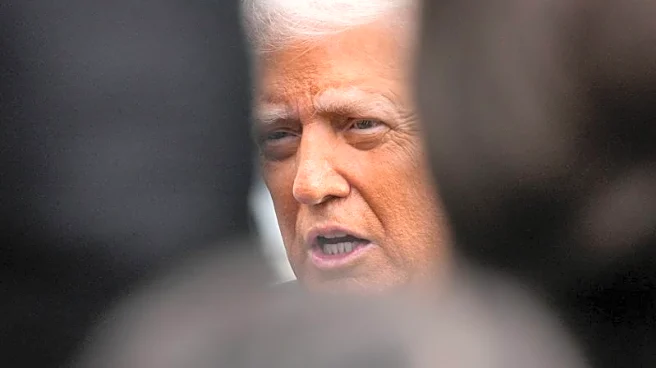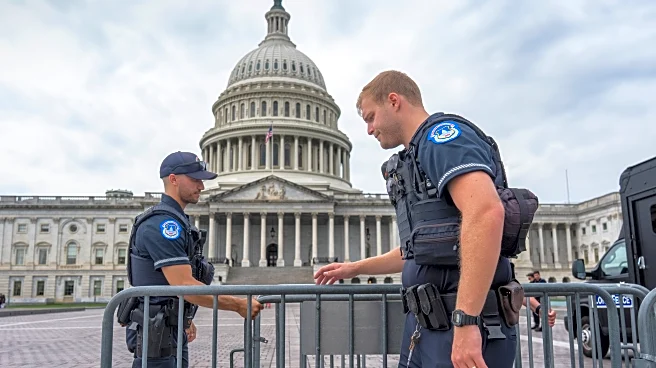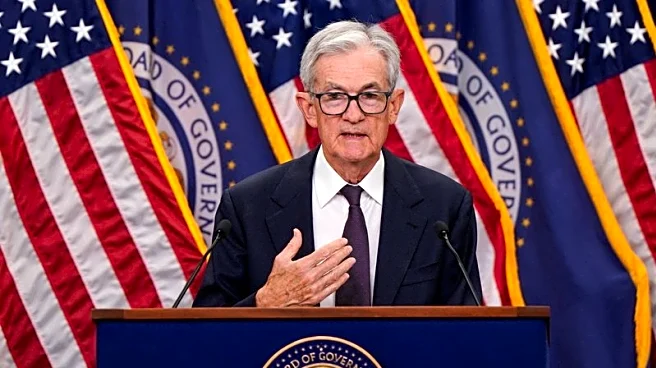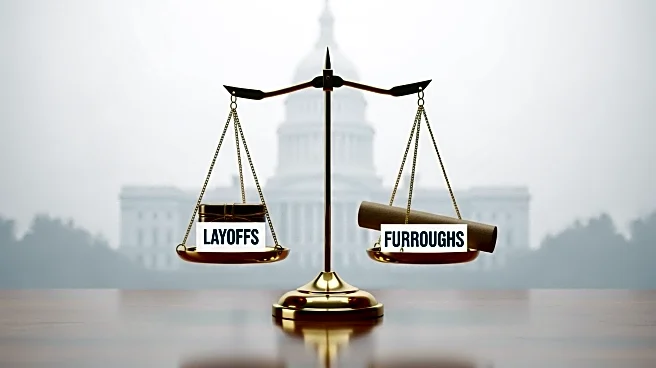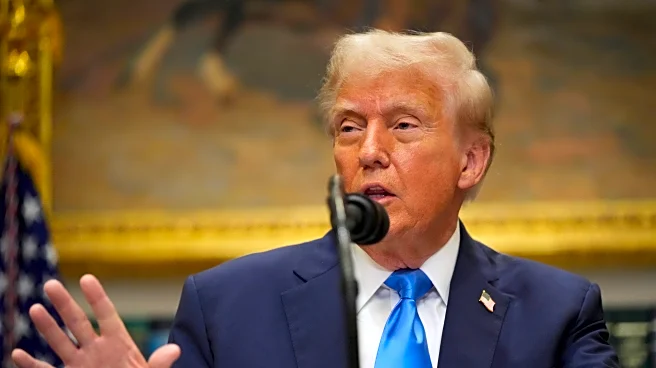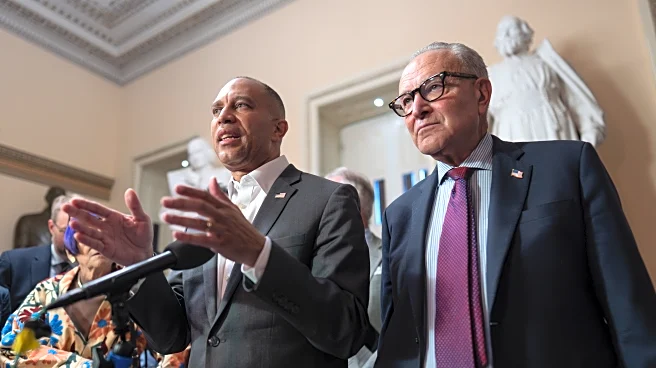What is the story about?
What's Happening?
The White House is preparing for a potential government shutdown by signaling plans to overhaul the federal workforce. The Director of the Office of Management and Budget, Russ Vought, has instructed agencies to prepare for a 'Reduction in Force' targeting programs that do not align with the president's priorities. This move is part of a broader effort to streamline federal operations and focus taxpayer money on essential services such as border security, immigration enforcement, and national defense. The administration views the current budget standoff as an opportunity to implement long-overdue reforms to the federal government, which conservatives have criticized for being bloated and inefficient. However, Democrats, including Senate Minority Leader Chuck Schumer, have accused the White House of using intimidation tactics against federal workers, while House Minority Leader Hakeem Jeffries has noted a lack of communication with Speaker Mike Johnson on avoiding a shutdown.
Why It's Important?
The potential permanent cuts to the federal workforce could have significant implications for U.S. public policy and government operations. By targeting non-essential programs, the administration aims to reduce what it perceives as wasteful spending, potentially leading to a leaner and more efficient government. This could impact various sectors, including those reliant on federal funding and support. The move also highlights the ongoing political struggle between the administration and Democrats, who are resisting the proposed changes and demanding policy concessions. The deadlock over the spending bill underscores the broader partisan divide in U.S. politics, with each side leveraging the threat of a shutdown for political gain. The outcome of this standoff could set a precedent for future budget negotiations and government restructuring efforts.
What's Next?
If the government shutdown occurs, it could lead to significant disruptions in federal services and operations. Agencies may face immediate workforce reductions, affecting their ability to deliver services. The administration's focus on essential services suggests that areas like national defense and border security will remain prioritized, while other programs may see cuts. Political leaders will likely continue negotiations to resolve the budget impasse, with potential compromises or concessions required to avoid prolonged shutdown effects. The situation may also prompt public debate on the role and size of the federal government, influencing future policy decisions and electoral outcomes.
Beyond the Headlines
The proposed cuts to the federal workforce raise ethical and cultural questions about the role of government in society. The administration's approach reflects a broader ideological stance favoring smaller government and reduced public spending. This could lead to long-term shifts in how government services are perceived and delivered, potentially affecting public trust and engagement. The debate over federal workforce size and efficiency may also influence future legislative priorities and the political landscape, as stakeholders assess the balance between cost-saving measures and service delivery.
AI Generated Content
Do you find this article useful?



